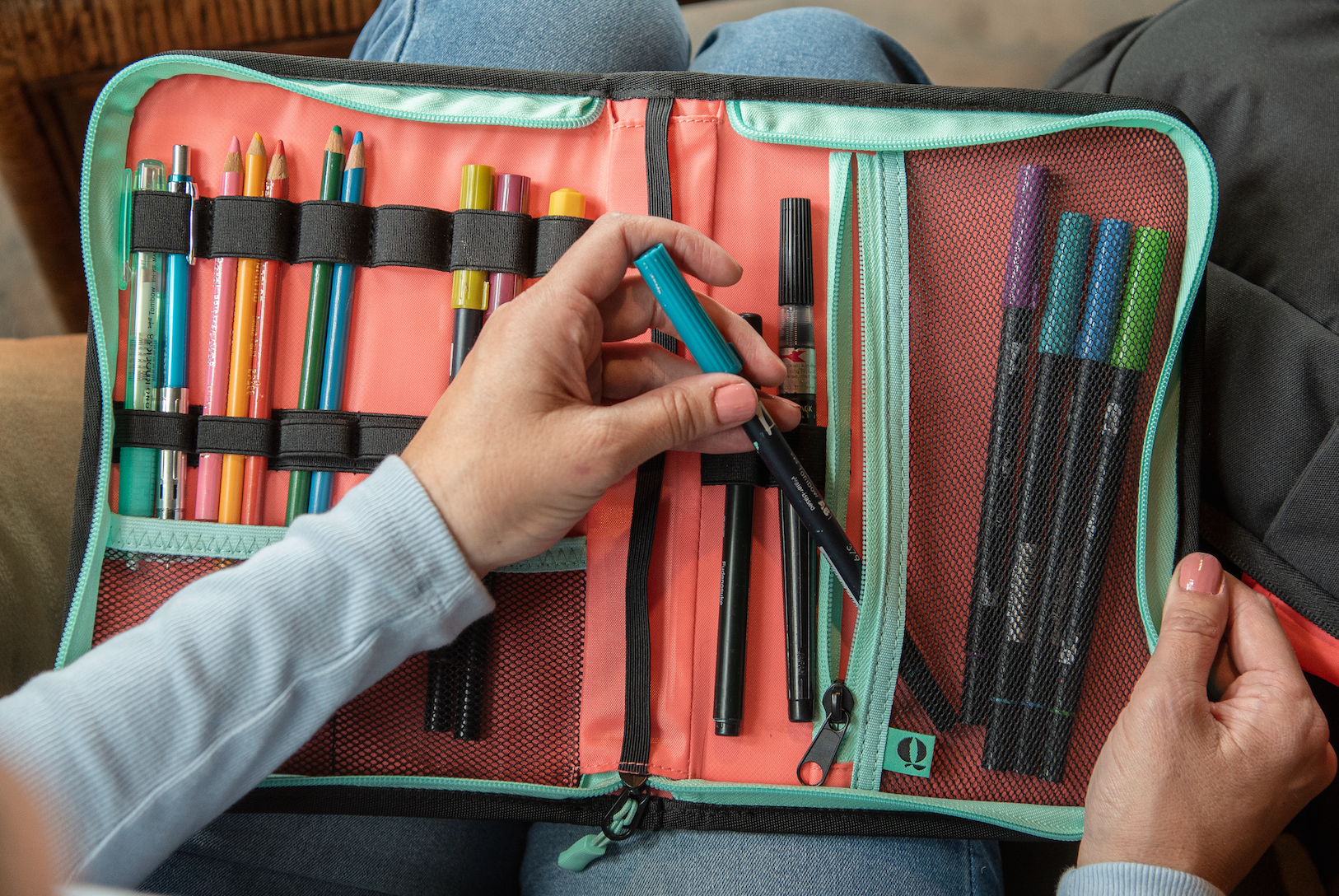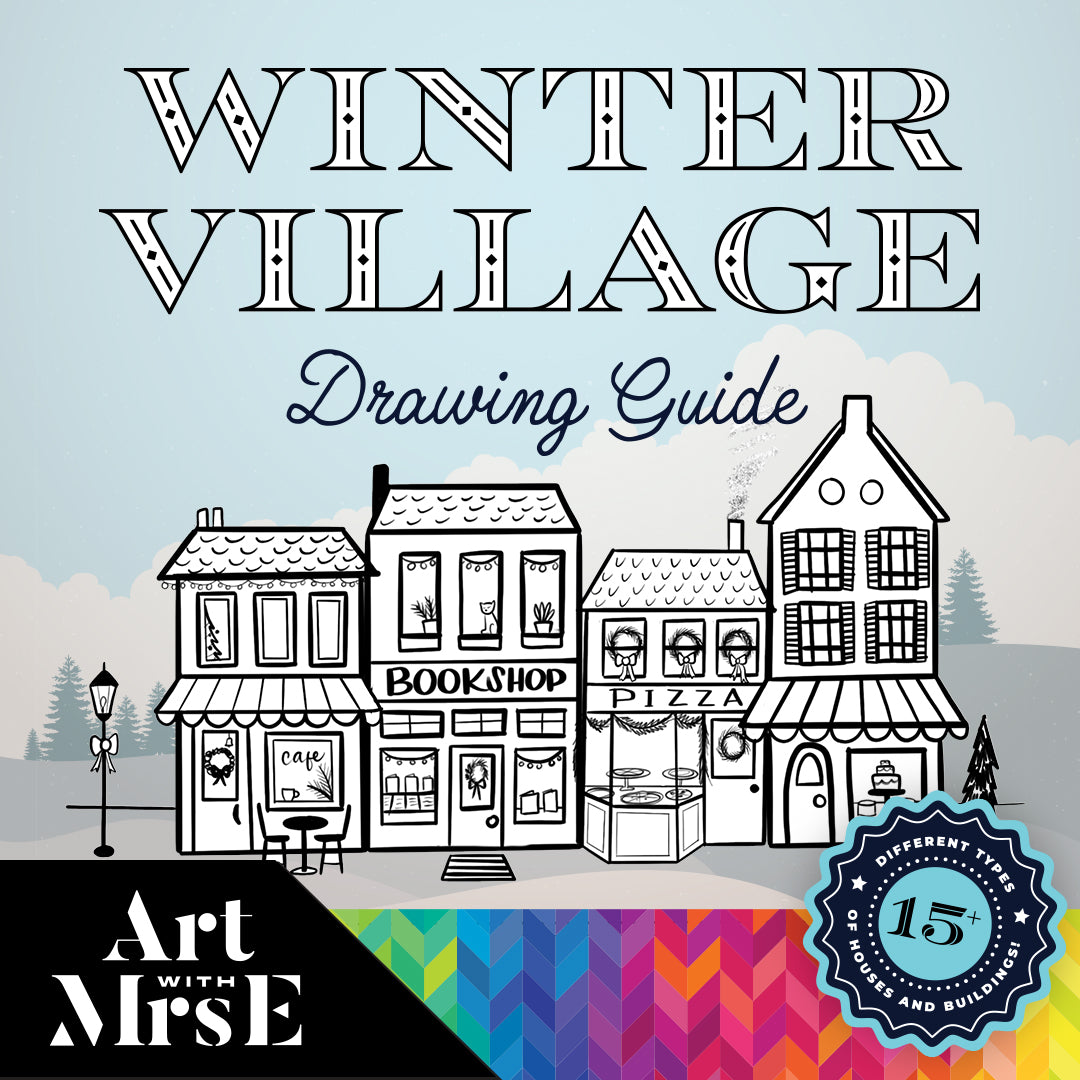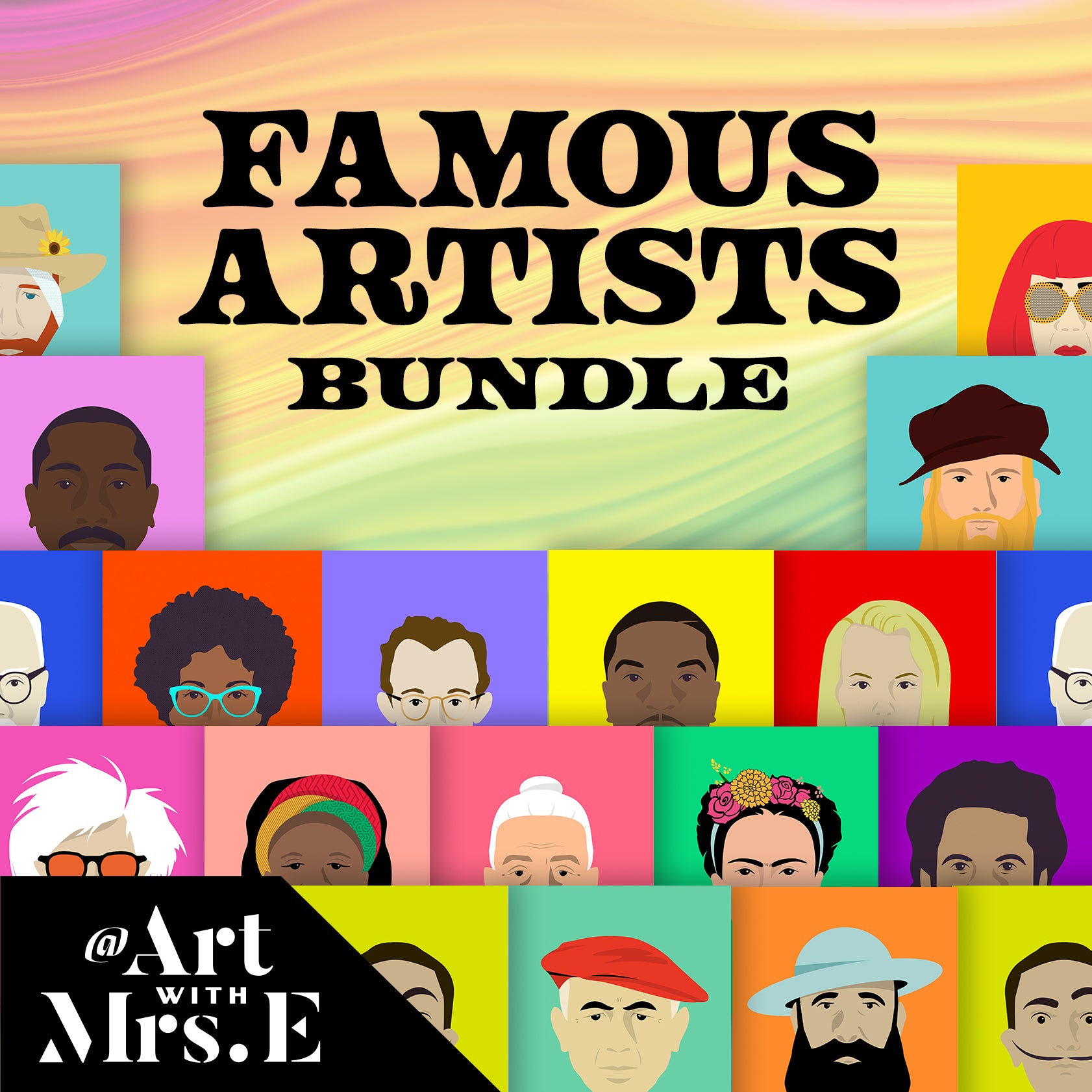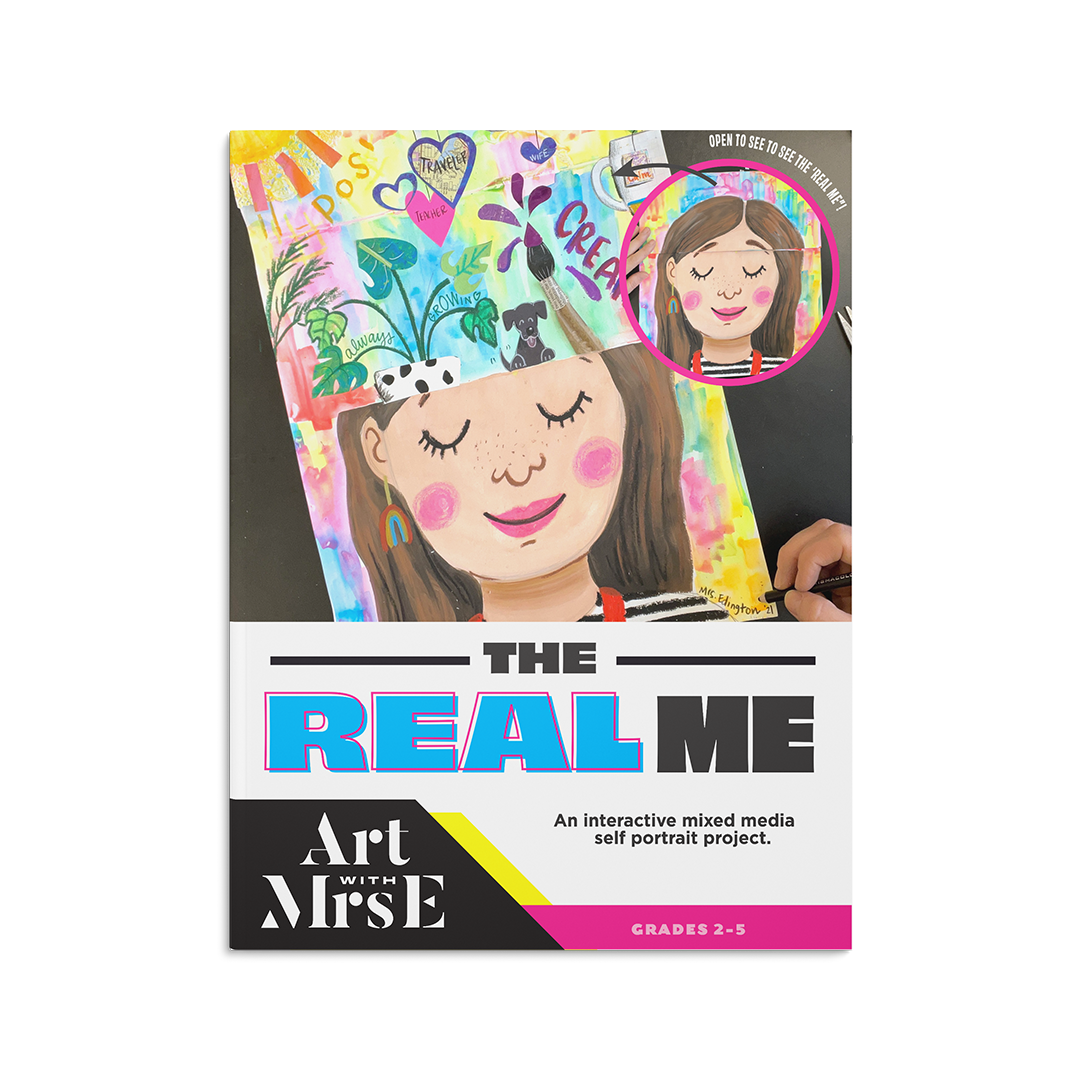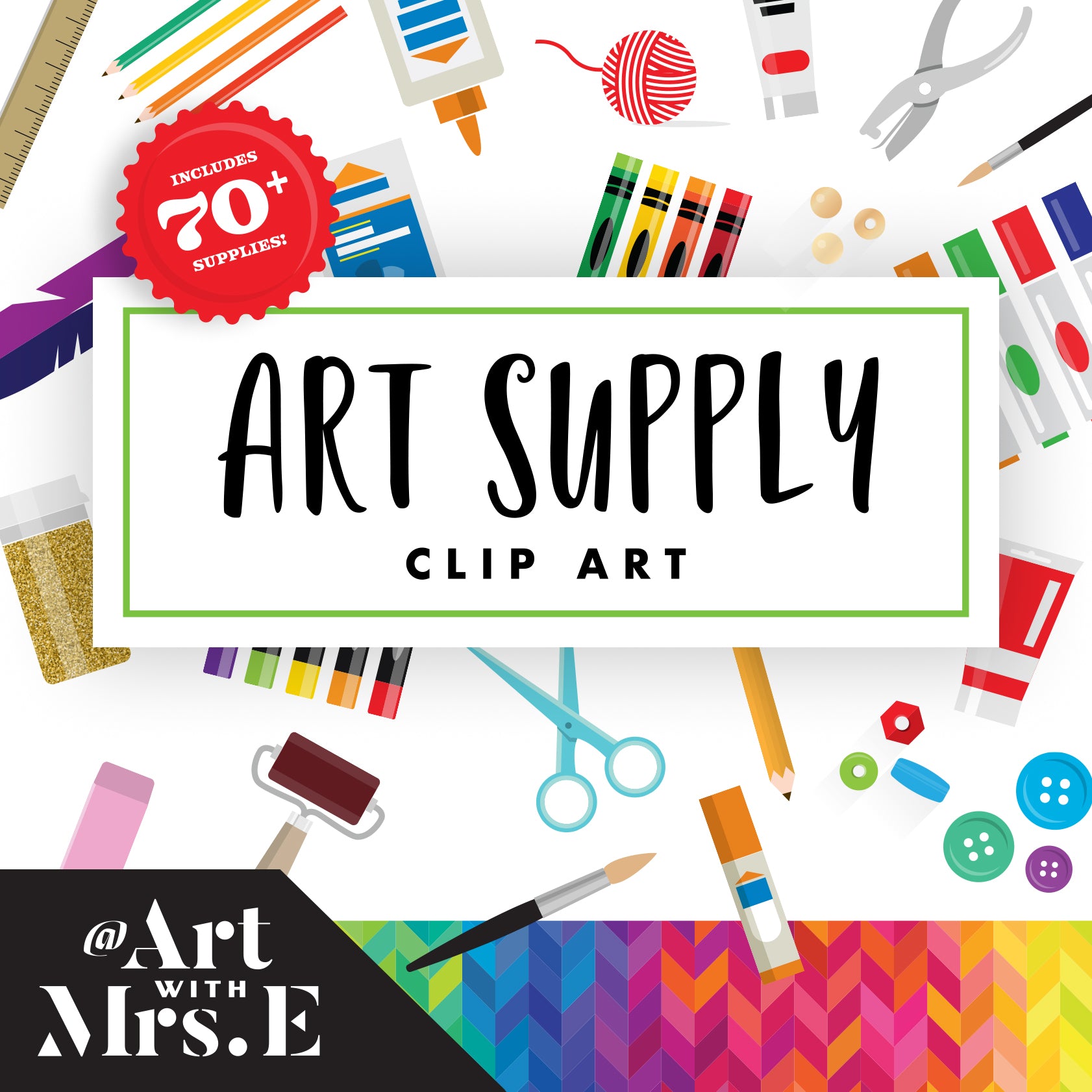Blog
Easy Coffee Filter Flowers Craft for All Ages! 🌸
Looking for an easy and engaging spring art project for kids? These colorful coffee filter flowers are perfect for art teachers and parents alike! With simple supplies and a big visual payoff, this process-based craft explores color mixing, creativity, and sensory play—making it an ideal addition to your spring arts and crafts lineup.
Learn moreThe Artist Bag That Goes Where You Go: Meet Quell’s Newest Must-Have
The Quell™ Artist Bag is the ultimate solution for artists, creatives, and art teachers who want to make art on the go easier than ever. Designed with a sleek, minimalist style, it features smart compartments for sketchbooks, supplies, and essentials—perfect for plein air painting, classroom travel, or creative adventures. Whether you're commuting, exploring, or teaching, this compact yet spacious bag keeps you organized and ready when inspiration strikes.
Learn moreCelebrating Women’s History Month Through Folk Art Portraits
Looking for a meaningful Women’s History Month art lesson for your classroom? This Folk Art Portrait project is a powerful way to help students celebrate influential women through portraiture, storytelling, and research. Perfect for elementary and middle school art teachers, this lesson encourages students to honor women they admire—whether historical figures or personal heroes—while exploring bold colors, patterns, and symbolism in their artwork. Discover how this engaging, easy-to-adapt art project fosters creativity, student choice, and conversations about representation and resilience in your art room!
Learn more8 Practical Tips For Making More Art as a Busy Adult and Parent
When you’re juggling work, family, and life’s endless to-do list, making time for creativity can feel impossible. Add kids into the mix, and art-making often falls to the very bottom—if it even makes the list at all. But what if creating didn’t have to be a big, time-consuming production? What if it became as natural as grabbing your morning coffee? The secret isn’t waiting for the perfect moment or a surge of motivation. The key is to start small, create an open invitation for yourself, and make art a natural part of your daily routine. As James Clear puts it in Atomic Habits, “Motivation often comes after starting, not before. Action precedes inspiration.” 1. Build the Habit First—Inspiration Will Follow A common misconception about making art is that you need to feel inspired first. In reality, just getting started—even with a quick doodle, a color swatch, or a few lines—can spark ideas. Instead of pressuring yourself to create something amazing, treat your sketchbook like a playground. Doodle while waiting in the car line, play with color while dinner is in the oven, or jot down small things that inspire you throughout the day. One of my favorite ways to just get started is painting a page in my sketchbook with a bunch of circles. Then later when the paint is try, I will ask myself "hmm now what can I turn these into?" I do this with other shapes too, like mugs, pots, or just blobs. It's enough to just rip off the bandaid of tackling the white page, and then excites me to get back to this page later on. You can also keep some drawing prompts on hand to easily access when you just can't think of what to draw! Remember, small creative moments add up over time! 2. Keep a Sketchbook Handy You don’t need an elaborate setup or expensive materials to make art daily. Keeping an A5 sketchbook on hand has been a game-changer for me. The smaller size gives me a sense of accomplishment, even when I only have a few minutes. And here’s the key: not every page needs to be a masterpiece. Your sketchbook is a space to experiment, play, and process your thoughts—free from pressure or judgment. The lower the stakes, the more likely you’ll keep coming back to it. 3. Make Your Supplies Easily Accessible Forget the idea that making art requires a full palette of paint and a giant canvas. Most of us don’t have the time or space for a dedicated art studio—but what if your supplies were always within reach? Lean into materials that excite you and fit your lifestyle. I love painting, but acrylics aren’t practical on the go—so I started carrying a travel-sized watercolor palette instead. To make creating easier, I put together a small pencil case with my favorite supplies, ready to go at a moment’s notice. This habit is actually what led me to design the Quell Carrier Case—a portable sketchbook case that keeps my supplies organized and accessible without the hassle of a big setup or cleanup. You can also create an invitation for yourself by leaving your supplies in a visible, easy-to-reach place. I like to keep my Quell Case on the kitchen counter, open and ready for when I wake up. If that doesn’t work for you, stash it in your bag, by your bedside, or anywhere you’ll naturally reach for it when you have a spare moment. If you're curious about what supplies I keep in my Quell case, or just my favorite supplies to use an artist, just click the links :) 4. Make Art Part of Your Daily Routine Think about your current daily habits—could you pair art with one of them? Maybe you sketch while drinking your morning coffee, unwind with a few lines before bed, or doodle while your kids do their homework. Habit stacking—adding a new habit to an existing one—makes it easier to be consistent. I’ve found that early mornings, before my kids wake up, work best for me most of the time. But here’s the bonus—on the days they wake up early, they often want to join in, and there’s no better way for us to start the day together! 5. Process Over Perfection As a busy mom and teacher, I used to tell myself I “didn’t have enough time” to make art. But once I started making time, I realized how many micro-moments existed throughout my day. Let go of the idea that every piece has to be polished or perfect. Maybe you only have 15 minutes while waiting at the doctor’s office—but that’s still better than not creating that day. The joy of art is in the process, not just the final product. 6. Use Sketchbooking as Self-Care Did you know that making art can actually lower stress? A 2016 study from Drexel University found that just 45 minutes of art-making significantly reduced cortisol levels, even in people with little artistic experience. Similarly, a study published in The Journal of Positive Psychology found that engaging in small creative activities daily—like sketching or crafting—led to an increase in positive emotions, personal growth, and a sense of accomplishment. Instead of scrolling your phone before bed, what if you took five minutes to sketch? Instead of filling every spare moment with productivity, what if you gave yourself permission to play with color? Reframing art as self-care rather than a luxury makes it much easier to prioritize. 7. Set a Small, Achievable Goal If making art feels overwhelming, start with a small, manageable goal. Maybe it’s filling one page a week, doing a five-minute sketch each day, or exploring a single color palette over the course of a month. Even the smallest goal can help build momentum. When I first started my sketchbook practice, my only goal was to create something—anything—every day. I didn’t set a time requirement or pressure myself with expectations. I just had to put something on the page. This simple approach made me more intentional about finding small pockets of time to create, and eight years later, it’s safe to say it worked! 8. Creativity Thrives with Limitations Sometimes, too many choices can lead to creative paralysis. Setting limitations—whether it’s time, materials, or color choices—can actually help you break through perfectionism and get into the flow of making. Try setting a timer for five or ten minutes and challenge yourself to create something within that window. When the clock is ticking, you’ll be less focused on making something “perfect” and more focused on simply starting. Similarly, limiting your supplies—like keeping only a few favorite tools or a small selection of colors in your kit—can remove decision fatigue and make it easier to dive into the process. Constraints can be incredibly freeing, allowing you to focus on the joy of creating rather than getting stuck in your head. Final Thoughts: Just Start—What’s the Worst That Could Happen? If you’ve been waiting for the perfect time to make art, this is your sign—start today. Open your sketchbook, grab your favorite supply, and just put something on the page. The more you do it, the easier it becomes. And with tools like the Quell Case, making art anytime, anywhere is easier than ever. Oh- one last thing! If you're looking for a creative community to help inspire and push you to create more art, consider checking out my Patreon! I absolutely love sharing my personal practice with my patrons and have so much fun creating together in live zooms 2x a month in my Sketchbook Buddies tier. The only thing better than making art is making art with other like minded creatives :) So, how will you make time for art today? Drop a comment and let’s inspire each other!
Learn moreHow to Make a Textured 3D Tree for Your Classroom or Art Show
Creating a large, textured tree is a beautiful, dynamic project that can be used year after year to create an immersive experience for an art show or your classroom. Whether you're celebrating the seasons, creating a backdrop for an art exhibit, or just looking to add some creative flair to your space, this DIY tree project is a perfect fit. Here’s how to make it step-by-step. Materials Needed: Painter's tape Brown kraft paper Foil (for texture) Hot glue gun Brown paper towels (for paper mache) Paper mache paste (homemade or Elmer's glue paste) Cheap green plastic tablecloths Paper clips or binder clips Pool noodles (optional for branches) Streamers or twisted green bulletin board paper (for vines) Paint and brushes (for embellishments) Step 1: Set the Base Start by finding a column or bump-out wall space to use as the tree's base. Secure brown kraft paper onto the wall with painter's tape to form the trunk of the tree. This will provide a sturdy foundation for the rest of your project. Step 2: Add Texture with Foil Crinkle some strips of foil and hot glue them onto the kraft paper base. This adds texture and gives the tree a more sculptural, realistic look. Foil is lightweight but can still give the appearance of rough bark or tree texture. Step 3: Paper Mache the Trunk Next, use strips of inexpensive brown paper towels (perfect for this project and commonly found in schools!) to create a paper mache layer over the foil. Dip the strips into paper mache paste (you can either make it yourself or use Elmer's glue paste) and apply them over the crumpled foil. This layer adds both texture and strength to the trunk. Step 4: Create the Tree's Leaves For the leaves, use green plastic tablecloths from the dollar store. These are cheap, easy to work with, and have a nice flowing texture. Attach the tablecloths to the ceiling using paper clips or binder clips, letting them hang down to form the main body of the tree’s leaves. Step 5: Make Vines to Hang from the Tree Create some fun vines by twisting green bulletin board paper, streamers, or strips of tablecloths. Drape them around the tree to give it an extra layer of whimsy and realism. You can even have your students help create these in bulk for efficiency! Step 6: Add Branches with Pool Noodles If you'd like to add branches to your tree, pool noodles work wonderfully. Cut them to the desired length, then wrap them in crumpled kraft paper and secure them using hot glue or more paper mache. This makes for flexible, lightweight branches that can be arranged however you like. Step 7: Embellish the Tree Trunk Once the basic structure is in place, it’s time for some finishing touches! Use a dry brush technique with different shades of brown paint to add texture to the trunk. You could also paint in a critter in a hole in the tree, or get creative with other ideas to personalize the look. Step 8: Bonus – Reuse Your Tree for Different Celebrations One of the best parts about this project is that it’s versatile! You can reuse the tree year after year for different themes or school events. For example, I used this tree as part of a Mister Rogers-themed art show. The possibilities are endless when you think about how to incorporate the tree into different celebrations or art show themes! This DIY tree is a fun way to add a creative element to your space, and the best part is it can be used for multiple purposes throughout the year. From art shows to classroom decor, it’s sure to be a hit! Happy crafting!
Learn moreHow to Make a Vibrant Paper Weaving: A Fun and Accessible Art Project for Kids
Create a vibrant paper weaving project with your students by combining bubble wrap printing and colorful weaving techniques! This engaging lesson strengthens fine motor skills, pattern recognition, and color theory while allowing kids to explore texture and contrast. Perfect for art teachers, homeschool parents, and adapted art classes, this hands-on activity is a fun and accessible way to teach weaving and mixed media art!
Learn moreStamp Your Wild Side: DIY Printmaking Art Project Inspired by Charley Harper
If you love bold, graphic designs and exploring art with kids, you won’t want to miss the ‘I Am Wild’ exhibit at the Pittsburgh Children’s Museum. Inspired by the iconic work of Charley Harper, this exhibit celebrates his unique way of seeing the natural world—through vibrant colors, geometric shapes, and minimal, yet striking, compositions. To bring a piece of this artistic magic home, I’ve created a DIY stamping project inspired by Harper’s distinctive style. This simple and fun activity lets kids explore shapes, printmaking, and creativity while making their own animal prints—just like Harper’s iconic artwork. Plus, with Valentine’s Day around the corner, these homemade stamps can be used to make one-of-a-kind cards! About the ‘I Am Wild’ Exhibit at the Children’s Museum The ‘I Am Wild’ exhibit immerses visitors in the world of Charley Harper, whose artwork transforms animals into striking, shape-based designs. His approach, often called “minimal realism,” captures the essence of birds, insects, and wildlife through bold lines and geometric forms. At the exhibit, kids and families can explore interactive displays, create their own shape-inspired art, and learn about Harper’s deep love for nature and conservation. It’s a perfect way to introduce young artists to his unique vision while inspiring them to see the world through an artistic lens. DIY Charley Harper-Inspired Stamping Project This easy and engaging printmaking project allows kids to build their own animal stamps using simple geometric shapes. Whether they want to make birds, fish, or any other wild creature, this activity encourages creativity while reinforcing Harper’s style. Materials You’ll Need: Adhesive craft foam shapes or adhesive foam sheets Scissors Cardboard squares, or wooden blocks, bottle caps, anything hard to use for the stamp base Brayers (small ink rollers) Washable block printing ink or acrylic paint white or colored paper- I love this neon card stock from Astrobright Step-by-Step Instructions: Create Your Stamp Design Use pre cut foam shapes, or cut basic shapes (triangles, circles, rectangles) from adhesive craft foam. Arrange and stick them onto a cardboard square or wooden block to form an animal, just like Charley Harper’s geometric creatures. Use a pencil to draw lines as detail that will show up in your stamp. Ink Your Stamp Roll ink onto your foam stamp using a brayer for even coverage. If using acrylic paint, apply a thin, smooth layer. You can also use an ink pad or even markers if you do not have a brayer or paint to use for printing. 3. Press & Print Firmly press the stamp onto paper and lift to reveal your design. Experiment with stamping patterns, using different colors, layering shapes, and adding details with acrylic markers or puffy paint. 4. Optional: Add additional details to you print or a Valentine’s Day Twist! Turn your prints into handmade Valentine’s cards by using pink and red ink or cutting out heart shapes to add to your designs. Add extra fun and flair to your prints with puffy paint, paint pens, or any supply you'd like to make them more personalized! Other Printing Options: You can also choose to use your DIY stamps with an ink pad! This is a more mess free option. You can check out some stamp pads here Why This Project is Perfect for Kids Encourages creative thinking through shape-based design. Introduces basic printmaking techniques in an easy, approachable way. Ties into a real-world art exhibit, deepening kids’ appreciation for Harper’s work. Provides a hands-on way to make personalized gifts and cards for special occasions. Visit the Exhibit & Try This at Home! If you’re in the area, I highly recommend visiting the ‘I Am Wild’ exhibit at the Children’s Museum to see Charley Harper’s work up close and spark even more creative inspiration! Then, bring the fun home with this DIY stamping project and see what wild creations your kids come up with. Happy stamping!
Learn moreWinter Themed Sensory & STEAM Art Projects for Kids
(click the video above for the full tutorial of how to make a snow storm in a jar) Winter is the perfect season for cozy, creative fun that also teaches valuable concepts. These sensory and STEAM-inspired art projects are engaging for kids of all ages and provide hands-on learning opportunities. Perfect for a classroom activity or family bonding time, these projects are simple to set up and endlessly customizable. Let’s dive in! 1. Snowstorm in a Jar Bring the magic of a swirling snowstorm indoors with this mesmerizing project. Using common household items, you can create a mini snowstorm that’s as fun to watch as it is to make. Materials: Clear jar or glass Baby oil White paint (tempera or acrylic) Water Glitter (optional for sparkle) Alka-Seltzer tablets (optional) mini plastic animals or trees Instructions: 1. Fill the jar about three-quarters full with baby oil. 2. In a separate cup, mix a few tablespoons of white paint with about a 1/4 cup of water until it’s liquid but opaque. 3. Pour the paint mixture into the jar with the oil. Watch as the two layers separate due to their different densities. 4. Sprinkle in glitter for extra shimmer. 5. Break an Alka-Seltzer tablet into small pieces and drop one in. Watch the snowstorm come to life as bubbles rise and carry the paint through the oil. For added fun, you can hot glue mini plastic animals or trees into the bottom of the jar before starting so that your snow storm resembles a snow globe! I found these woodland animals and trees at Michaels, or you can check out these woodland animals, or check out this set of mini polar animals here. All I did was use a pair of long craft tweezers and a dot of hot glue to stick them to the bottom. STEAM Learning: This activity demonstrates density (oil and water don’t mix) and chemical reactions (Alka-Seltzer produces carbon dioxide gas that moves the paint). It’s a great way to connect art with science! 2. Snow Dough This moldable, fluffy sensory material mimics real snow and offers endless opportunities for creative play. Kids can shape it into snowballs, snowmen, or even sculpted art pieces. Materials: 2 cups of corn starch ½ cup of hair conditioner (white and unscented is best) Glitter (optional) Essential oils (optional for scent) Instructions: In a large bowl, mix corn starch and conditioner until it forms a soft, crumbly dough. Adjust the ratio if needed for your desired texture. Add glitter for sparkle or a few drops of essential oil for a calming aroma. Let kids use their hands to mold and shape the dough into wintery creations like snowmen or cookie cutters for winter themed shapes. You can also make enough to be the snow in a winter themed sensory bin and add cute little trees, glass vase beads and winter themed animals. STEAM Learning: This project introduces states of matter, showing how a solid (baking soda) and liquid (conditioner) combine to form a new texture. Why These Projects Are Great for Kids These winter-themed activities are not just fun and creative—they’re also excellent opportunities for hands-on learning. Through sensory play and STEAM concepts, kids can: Understand scientific principles like density, states of matter, and chemical reactions. Develop fine motor skills through squeezing, shaping, building, crafting and open ended play Build their creativity by personalizing each project. Whether you’re looking for a snowy day activity or an engaging classroom lesson with lots of sensory and science fun, these projects are sure to bring smiles and spark curiosity. Gather your supplies and let the winter creativity begin!
Learn moreMy Most POPULAR Art Project for Kids: Northern Lights Lesson
Bring the magic of the Northern Lights into your classroom with this beloved art lesson for kids. Teachers and students worldwide have embraced this creative and accessible project, making it a favorite for winter-themed art.
Learn moreDIY Eco-Friendly Holiday Décor: Cardboard Winter Villages and Giant Paper Bag Snowflakes
Looking for festive, budget-friendly holiday décor ideas? This season, skip the store-bought decorations and try making your own with materials you likely already have at home. These eco-friendly crafts are not only beautiful but also fun for the entire family to create together! In this blog, I’ll show you how to turn cardboard and brown paper bags into adorable winter villages and stunning giant snowflakes. Back story: Picture this, it's the year of 2020 and you are an art teacher attempting to teach art during a global pandemic to kids who are either: a. quarantined at home while the rest of their classmates are in school, or b. an entire class of children who are remote learning from home and having to use only supplies that are accessible to them at their house. Sounds kind of like a nightmare huh? Nope! Just another day as a teacher during the Covid 19 Pandemic. *shutters at the memories* All jokes aside, even though teaching through the pandemic was one of the most difficult times I've experienced throughout my career, it also was filled with many silver linings. One of them was forcing myself to think creatively about how I could still provide quality instruction to my students despite the circumstances. One of the fun routes I decided to go was to have a focus on using eco friendly materials and upcycling everyday materials to create art with. One of the supplies we used most often was cardboard! So around the holidays I decided to have my students create gingerbread homes out of cardboard and white paint or paint pens, and it was so much fun! I also forced myself to start making Youtube videos that my students could access at their leisure when making these projects from home. Anyways, it was a wild time but I came out of it with lots of fun lessons and ideas to continue to share! So let's get into them, shall we? 1. Cardboard Winter Village Transform everyday cardboard into a cozy holiday display with this upcycled winter village project. Whether you’re making a quaint snowy town or whimsical gingerbread houses, this craft is a perfect family activity. Materials Needed Cardboard (think cereal boxes, shipping boxes, or leftover packaging) Scissors Glue Markers or paint Optional embellishments: buttons, fabric scraps, cotton balls, glitter Step-by-Step Instructions Cut House Shapes: Use scissors to cut out house shapes from the cardboard. Vary the sizes for a charming village vibe—tall houses, cottages, or even a shop or church! Decorate: Let your creativity shine! Draw or paint doors, windows, and roof tiles. Add festive touches like wreaths or string lights using your markers or paints. You can use my Winter Village Drawing Guide for inspo! Embellish: For an extra cozy feel, glue on buttons for doorknobs, fabric scraps for curtains, and cotton balls for snow. Display: Arrange your village on a mantle, windowsill, or as a centerpiece for your holiday table. Tip: Encourage each family member to decorate their own house, adding their unique style to the village. Additionally, you can make these winter homes in all sizes! I loved making a giant house with my adapted art class, made from my paper storage cardboard! You can learn more about that full project on my blog 5 Amazing Winter Art Projects for Adapted Art. 2. Giant Paper Bag Snowflakes If you’re looking for a show-stopping decoration, giant paper bag snowflakes are the way to go. These are easy to make, eco-friendly, and bring a magical touch to any room. Materials Needed 7 paper lunch bags (brown or white) Glue bottle or hot glue (preferred) Scissors Ribbon/ String for hanging Step-by-Step Instructions Glue the Bags: Apply glue in an inverted “T” shape (across the bottom edge and up the middle) and stack the bags together. Repeat until all bags are glued. Cut Designs: Once the glue dries, cut patterns along the edges of the stack—triangles, semicircles, or zigzags work great. Fan the Stack: Carefully fan the stack open and glue the two ends together to form a snowflake shape. Hang and Display: Attach a string to your snowflake and hang it in a window, from the ceiling, or as part of a photo backdrop. These snowflakes look stunning in clusters of different sizes or colors and you can even paint them after the holiday season and turn them into flowers! You can find a video tutorial from me here! DIY Gingerbread House Gift Bags Turn ordinary brown paper bags into charming gingerbread house-themed gift bags. These personalized bags are perfect for wrapping small presents or treats and add a whimsical holiday touch to your gift-giving. Materials Needed Brown paper lunch bags White paint pen or white acrylic paint with a small brush Ribbon or twine Small gift tags (optional: cut from colorful cardstock) Scissors (optional for trimming) Treats, gifts, or holiday goodies to fill the bag Step-by-Step Instructions Prepare the Bag: Start with a flat brown paper bag. Fold down the top edge if you want a shorter bag. Draw the House Details: Use a white paint pen or white tempera paint and a thin paint brush to draw details like windows, doors, rooflines, and holiday elements (e.g., wreaths, snowflakes, or swirls). Get creative! Each bag can have its own design, from modern houses to cozy cottages. Add Embellishments (Optional): Punch a hole at the top of the bag and thread ribbon or twine through to secure it once the gift is inside. Attach a gift tag for a personalized touch, adding the recipient's name. Fill and Finish Add gifts into bag with small amount of paper filler, Fold in the sides, thread your yarn or ribbon through holes, and tie in the front.
Learn moreFavorite Teacher Gifts That Support Small Businesses
Looking for the perfect teacher gifts this holiday season? Discover my top picks from small businesses like Illy Lilly Design Co, Oh So Jo Designs, and Quell, featuring stylish lanyards, festive earrings, and practical sketchbook cases and aprons that educators will love!
Learn moreBest Art Supplies to Stock Your Child’s Quell Case: A Holiday Gift Guide
Looking for the perfect holiday gift to inspire your creative child? Fill a Quell Case with top art supplies—like travel watercolors, markers, and sketchbooks—so they can create art on the go, anytime inspiration strikes.
Learn more












